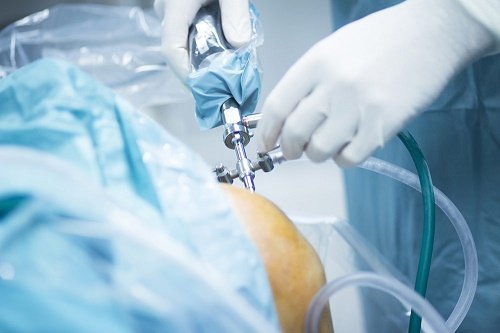Arthroscopic Surgeries

What is Arthroscopic Surgeries
Arthroscopy is a surgical procedure to diagnose and treat your joint’s structural problems, which often cause pain, instability or other dysfunction. The surgeon uses an arthroscope, a long, thin tube with a video camera and light on the end.
Arthroscopy allows the surgeon to see inside your joint without making a large incision. Surgeons can even repair some types of joint damage during arthroscopy, with pencil-thin surgical instruments inserted through additional small incisions.
What are the types of Arthroscopy?
Surgeons use arthroscopy to see inside joints without having to make large incisions. Types of arthroscopy include:
- Elbow arthroscopy.
- Foot and ankle
- Arthroscopy.
- Hand and wrist
- Arthroscopy.
- Hip arthroscopy.
- Knee arthroscopy.
- Shoulder arthroscopy.
Procedures
The procedures below are performed either with arthroscopy or with a combination of arthroscopic and open surgery:
- Rotator cuff repair
- Repair or resection of torn cartilage (meniscus) from the knee or shoulder
- Reconstruction of the anterior cruciate ligament (ACL) in the knee
- Removal of the synovium in the knee, shoulder, elbow, wrist, or ankle
- Release of the carpal tunnel in the wrist
- Repair of torn ligaments
- Removal of loose bone or cartilage in the knee, shoulder, elbow, wrist, or ankle
Treatments
Do R.I.C.E. therapy immediately after the injury:
R: Rest.
I: Ice.
C: Compression.
E: Elevation.
The type of treatment you receive is up to you. Many people with ACL tears decide to have surgery so that they can return to the activities they did before the injury. If your activity level isn’t as high, you might choose to not have surgery. But, keep in mind that your torn ACL won’t heal on its own.
What are the Advantages of Arthroscopy ?
Arthroscopy is a minimally invasive procedure. The procedure takes place through small incisions. Compared to an open surgery, the benefits include:
- Faster recovery.
- Less pain.
- Minimal blood loss and scarring.
Complications of Surgery?
Infection: Infection is rare, but still a risk with any type of surgery.
Stiffness: Stiffness in the knee is common post-surgery, but physical therapy can help it. This can be avoided by performing rehabilitation to regain all of your motion before surgery.
Viral transmission: Receiving a graft from a cadaver always comes with a risk of contracting diseases like HIV and Hepatitis C. There is less than a one in a million chance that you’ll get an HIV-infected graft.
Blood clot: A blood clot can be life-threatening, but it’s rare. The clot can break off in the bloodstream and cause a pulmonary embolism in the lungs or a stroke in the brain.
Kneecap pain: This complication is common when using patellar tendon grafts.
Risks
Tissue or nerve damage: The placement and movement of the instruments within the joint can damage the joint’s structures.
Infection: Any type of invasive surgery carries a risk of infection.
Blood clots: Rarely, procedures that last longer than an hour can increase the risk of blood clots developing in your legs or lungs.
